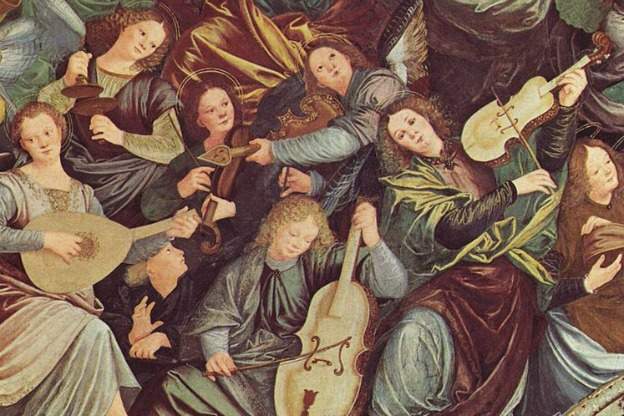
Giovanni Battista Fontana
Sometime in the mid-16th century, a century before Vivaldi was born, the violin in what we recognize as its basic size and shape, became standard in Italy. Around that time, Giovanni Battista Fontana was born in the northern Italian city of Brescia. Fontana later earned a reputation for himself as a virtuosic violinist and master of his age—so much so that during his lifetime, he even went by the nickname Fontana ‘dal violino.’ Only one of his known works survive—a group of sonatas in 1, 2, or 3 parts for violin. In his title, Fontana indicates the pieces could also be performed on cornetto or various other similar instruments.
2013 Mirare disc from the ensemble Stradavaria is dedicated entirely to the music of Fontana.
Antonio Vivaldi
Like Fontana, Antonio Vivaldi had roots Brescia. Vivaldi’s Father was born there in 1655, later settling in Venice where he worked as a barber for a time until his career as a professional violinist took off. Antonio was the oldest of nine children, and the only one to become a musician. He likely learned to play violin from his Dad. Vivaldi was prolific composer—in the concerto genre alone, writing some 500 concertos, over 230 of those for the violin. He also wrote sonatas for the violin. His sonata, RV 19, is performed by the ensemble La Serenissima on their 2014 Avie records release.
The full title of RV 19 is sonata 'a solo facto per Monsieur Pisendel.' Vivaldi dedicated and wrote this sonata for the German composer and violin virtuoso, Johann Pisendel. Born in Cadolzburg, Pisendel traveled to Weimar and on to Leipzig in 1709, meeting J.S. Bach along the way. By 1712, Pisendel had landed a good job as a violinist with the Dresden court orchestra, with whom he toured extensively in France, Berlin, and Italy. Pisendel spent 9 months in Venice on the Italian tour in 1716, during which time he studied with and became close friends with Antonio Vivaldi. Pisendel, its seems, could play just about anything you could throw at him! Pisendel didn’t write nearly as much music as Vivaldi, maybe because he was so busy performing. But the music he did leave behind is assured and well-crafted. Fellow German composer Johann Quantz was especially fond of Pisendel’s interpretation of adagio movements.
After his time in Venice, Pisendel continued on through various cities on the Italian tour. In Rome, Pisendel took lessons from Corelli’s successor, Antonio Montanari. Pisendel must have liked Montanari, hand copying three of Montanari’s sonatas to take back with him to Dresden. An unusual one of these is Montanari’s d minor sonata for violin and continuo whose closing movement leaves out the continuo entirely.
There are lots of hidden gems of Italian music for violin— and not only the famous pieces from composers like Corelli and Vivaldi. Called "Hidden Treasures of Italy," Stefano Montanari performs on a 2014 recording with the Arion Baroque Orchestra of Quebec. The CD highlights little known composers such as Carlo Alessio Razetti who worked in Turin and lived roughly the same time as Vivaldi. Razetti was no doubt influenced by the prolific Vivaldi as elements of Vivaldi’s style show up in Razetti’s music.
The next generation of Italian composers including Cristiano Giuseppe Lidarti started moving towards a new musical language—one closer to the Classical stylings like that of Mozart and Haydn. But the latest composer on the disc is a woman by the name of Maddalena Lombardini Sirmen. Lombardini was a violinist, educated first at the Ospedale dei Mendicanti in Venice, and subsequently as a student of Tartini in Padua. Tartini’s famous letter to violinists on how to practice was addressed to this very Maddalena Lombardini. Lombardini published six violin concertos in 1772 that become popular even outside of Italy. Performances of her concertos are documented in Stockholm, and again in Salzburg, where Mozart’s Father heard one in 1778.









